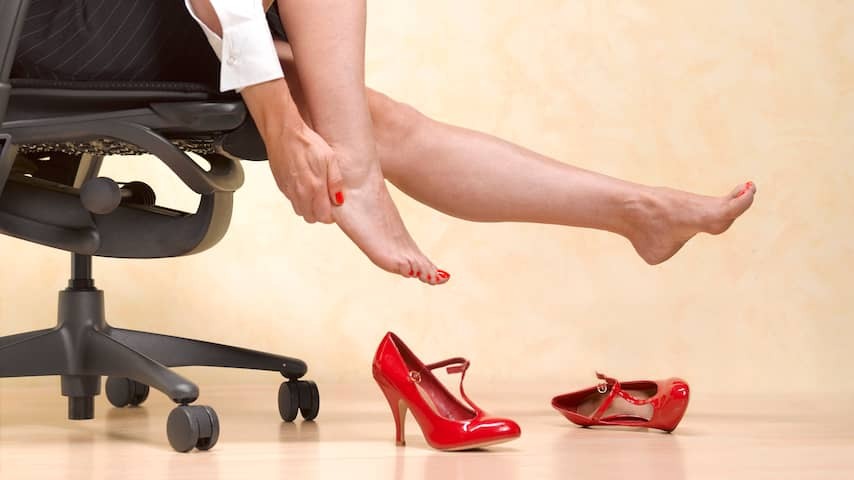
You see it less and less: women who are required to wear high heels at work. Readers wonder if wearing heels is unhealthy.
It is not good to wear heels every day, says Cocky Hoogeveen. As a physiotherapist specializing in feet, she works at Voetentraining, a platform for treating foot complaints. “For your feet, it’s best to keep them as flat as possible. After all, that’s how you were born.”
Podiatrist Freek van Asselt agrees. If you constantly burden your feet in an unnatural position, it can lead to permanent changes in the structure of the foot, he says. Even with shoes with a heel of less than 4 centimeters, you can already notice that, Hoogeveen warns.
In the case of such a small heel, 60 percent of your body weight rests on your forefoot, compared to only 40 percent on the back of your foot. With heels of 7 centimeters or more, that pressure distribution becomes even more uneven: your forefoot then absorbs no less than 90 percent of your body weight.
So your body lacks balance, and that needs to be compensated for. “The feet serve as the foundation of our body and carry your full weight,” says Van Asselt. If you wear heels and distribute your weight unevenly, the feet are forced to adapt, he knows. “That not only affects your feet, but also the rest of your body.”
You can suffer from chronic pain
This can lead to a change in the posture of your body. “Ultimately, you can suffer from back pain, pelvic instability, and even your spine,” says the podiatrist. This changing posture can also lead to chronic pain and shortened Achilles tendon and calf muscles.
That’s not only uncomfortable, it also makes it harder to move your ankles properly, says Van Asselt. Also, these shoes naturally have consequences for the feet themselves. Think of claw toes, corns, and calluses. Anything but pleasant if you have to deal with that as a flight attendant during a long flight.
How to improve your posture
If you stop wearing heels, your posture will improve significantly, says Hoogeveen. “As a result, your complaints will decrease, but that takes time. Your muscles are shortened and weakened, and need to be stretched and strengthened again.” She therefore advises starting cautiously with only short walks in flat shoes.
If you still want to continue wearing heels, it is good to know that the type of heel matters. “The best is a shoe with a heel directly under the heel bone. The rest of your body then has to compensate less to find that balance again. You sometimes see heels in the shape of a curve. That means your hindfoot is pushed even further forward,” says Hoogeveen.
She also advises paying attention to the toe of the shoes. “That’s also a problem. The toes should be able to lie flat on the ground when pushing off. With shoes with a narrow toe, your toes don’t get that space.” If you’re going for sneakers from now on, it’s good to pay attention to that too.